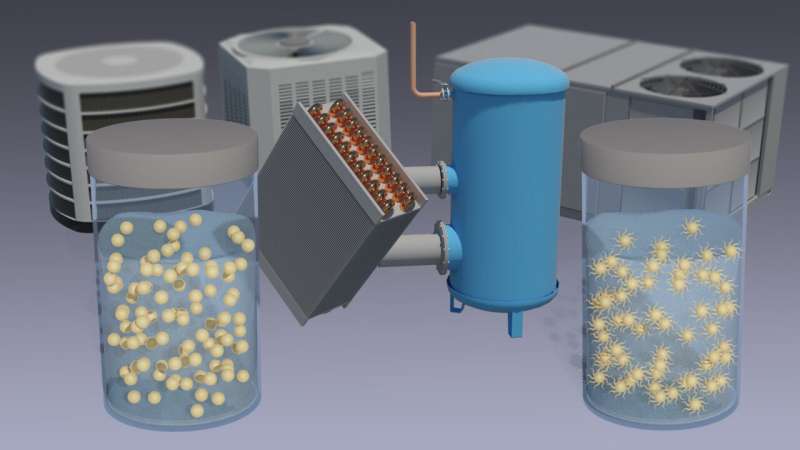Boosting thermal energy storage with polyelectrolytes

Oak Ridge National Laboratory researchers have demonstrated that an additive made from polymers and electrolytes improves the thermal performance and stability of salt hydrate phase change materials, or PCMs, a finding that could advance their integration into carbon-reducing heat pumps.
PCMs absorb and release energy when changing between solid and liquid forms, making them suitable for heating and cooling applications. They’re also prone to phase separation and instability, which limits thermal energy storage capacity.
In an ORNL-led study published in iScience, eight different polymer mixtures were added to the PCM. Synthetically made and naturally occurring polymers were tested. Results showed that the polyelectrolyte additive, dextran sulfate sodium, can achieve the best performance.
“The pure salt hydrate PCM cannot sustain up to 10 melt-freeze cycles, but with the additive, stability is retained after 150 cycles,” ORNL’s Damilola Akamo said. “This determination will help inform the design of thermal storage materials in low-carbon-emitting heat pumps for residential and commercial buildings.”
More information:
Damilola O. Akamo et al, Stabilization of low-cost phase change materials for thermal energy storage applications, iScience (2023). DOI: 10.1016/j.isci.2023.107175
Citation:
Boosting thermal energy storage with polyelectrolytes (2023, November 16)
retrieved 16 November 2023
from https://techxplore.com/news/2023-11-boosting-thermal-energy-storage-polyelectrolytes.html
This document is subject to copyright. Apart from any fair dealing for the purpose of private study or research, no
part may be reproduced without the written permission. The content is provided for information purposes only.
For all the latest Technology News Click Here
For the latest news and updates, follow us on Google News.
